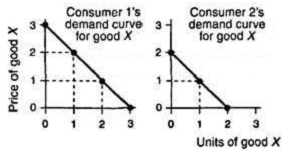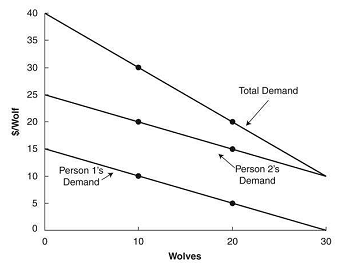Question 1:
In each of the following situations, discuss whether free markets are likely to provide Pareto-optimal levels of the goods, or whether a market failure distorts the markets.
(a) Although a restaurant has a separate smoking section, the smoke from that section spreads to the nonsmoking part of the dining area. As a result, some of the nonsmokers leave before they have finished their dinners.
(b) A restaurant owner decides on his own to separate, both physically and through ventilation systems, the smoking and nonsmoking sections of his restaurant. Both smokers and nonsmokers find the arrangement acceptable.
(c) Radon, a naturally occurring gas, increases the risk of cancer in poorly ventilated basements in areas with particular geologic characteristics. For purposes of this question, assume that radon affects only homeowners living in the house, and the homeowner can easily find out radon levels in the house. Ventilating the radon out of a home costs about $1000.
(d) Suppose now that, if a homeowner takes care of the radon in his home, he may reduce radon levels in neighbors' houses as well. How does that change your answer in (c)?
Question 2:
Are the following decisions Pareto improving? Pareto optimal? Explain why or why not.
(a) The restaurant owner in 1(b) spent $10,000 to install the separate ventilation systems but felt it was worth it in terms of improved customer satisfaction and resulting increase in visits.
(b) The homeowner in 1(d) decided not to install a radon ventilation system, because he was unwilling to pay more than $500 (his valuation of the additional risk due to radon exposure) to eliminate the radon in his house.
(c) Because 10 neighbors of the homeowner in 2(c) would benefit $100 each from reduced health risks due to radon if the homeowner put in the ventilation system, the homeowners' association for the neighborhood required the homeowner to install the abatement system.
Question 3:
Here are a few example of market failures. In each case, identify the type of market failure and explain why it compromises efficiency.
a) The partial expropriation of an oil company in Argentina has investors worried about investing in the country
b) Ecologists worry that pandas are endangered as their habitat is disappearing
c) Industries release sulfur dioxide and nitrogen oxide into the air. These pollutants cause acid rain, which affects ecosystems
d) The Abbey of Saint Sixtus of Westvleteren in Belgium produces a beer called Westvleteren 12, which lovers of fine beer widely consider as the best beer in the world. However, the monks have no interest in profitability and accept to sell only just enough beer to pay for their living expenses. The allocation is done essentially via a line-up system in front of the abbey and the bottles are sold at 1.67 euros per bottle. Given this low price, limited supply and high demand, those who could afford the time and money to travel to the monastery to buy the beer ended up acting as suppliers in a secondary markets where "demand" came from those who can't afford the trip to the monastery. Indeed, some beer lovers in North America for instance were willing to pay up to a hundred dollars for a buyer in Belgium to ship them a single bottle of this holy grail of brewing (there's all kinds of people in the world!). When they were made aware that their beer was being resold at much higher prices on those resell markets, the monks decided to require that every buyer sign a contract in which they promise not to resell the bottles they bought.
Question 4: Aggregate demand
The figure below shows the demand curve for good X for two different consumers. Assume that there are no other consumers in the market for good X.

a) Find the aggregate demand curve for the market for good X and indicate what calculations you have done to find the key points that allowed you to trace out the curve.
b) What is the marginal WTP for the second unit of the good
(i) for consumer 1?
(ii) for consumer 2?
c) What is the aggregate WTP for the second unit of the good?
Question 5: Climate change
Some people argue that we should not be worried about climate change because the earth has already been much warmer in the past than it is now, yet life on earth nevertheless flourished in those times. What is wrong with this argument?
Question 6: Consumer surplus
Consider figure, which is reproduced below.
a) What is the total willingness to pay for 30 wolves of person 1 according to this figure?
(i) Compute an approximation using "blocks" of 10 wolves
(ii) Compute an exact value by finding the total area under person 1's demand curve
(iii) How big was the error in the approximation of part (i)?
b) What is the exact total willingness to pay for 20 wolves for person 1 and 2 together?
(i) First, answer this question by computing the individual total willingness to pay for each person, then adding them up
(ii) Second, answer the question by directly using the total demand curve to compute total willingness to pay
(iii) Do you get the same answer in (i) and (ii)?
